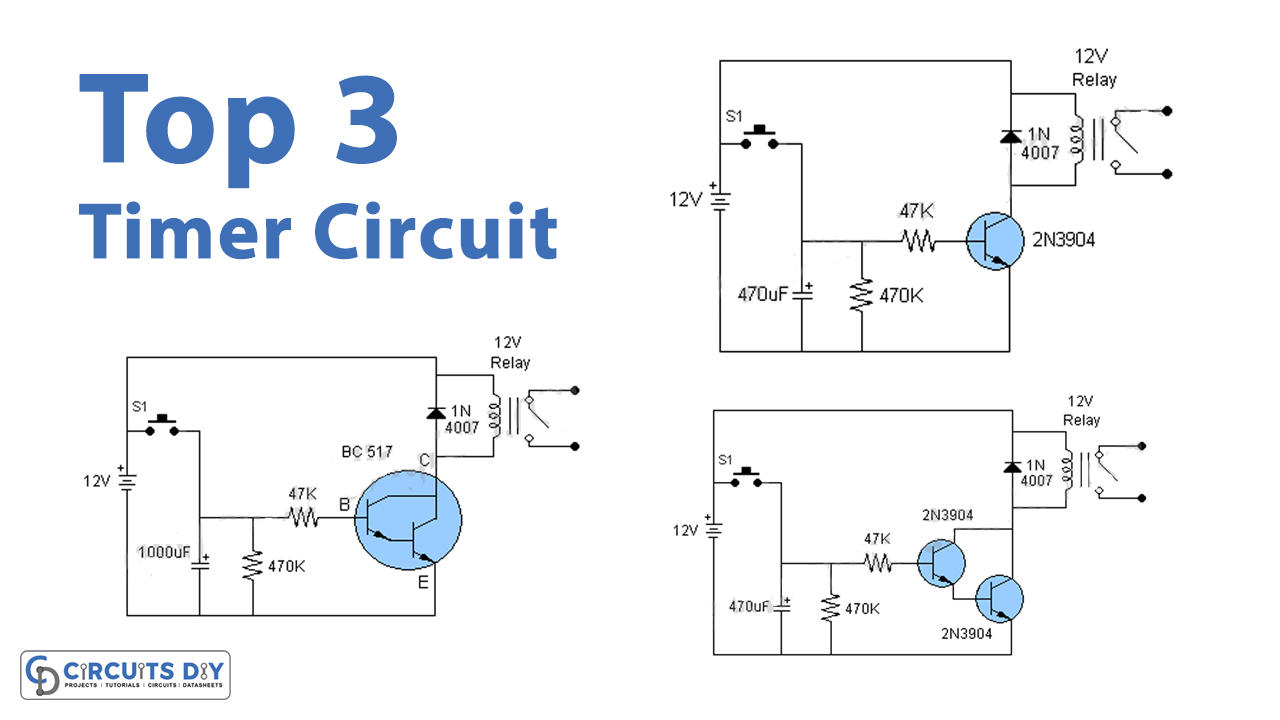
How to Make a Simple Timer Relay Circuit
Timer relay circuits are incredibly useful in a variety of applications, from controlling lights and appliances to automation projects. In this article, we will show you how to build a simple timer relay circuit that you can easily customize for your specific needs.
Before we get started, here are the materials you will need:
- 555 Timer IC
- Relay
- Resistors (220 ohm, 1k ohm)
- Capacitors (10uF, 100uF)
- LED
- Diode
- Pushbutton switch
- Breadboard
- Jumper wires
Now, let’s dive into the step-by-step process of building your own timer relay circuit.
Step 1: Set Up the 555 Timer IC
The 555 Timer IC is the heart of this circuit. Start by placing the 555 Timer IC on the breadboard and connecting the pins according to the following diagram:

Make sure to double-check your connections to avoid any mistakes. The 555 Timer IC will be responsible for generating the timing pulses for the relay.
Step 2: Connect the Relay
Next, connect the relay to the 555 Timer IC. The relay will be used to control the external circuit based on the timing pulses generated by the 555 Timer IC. Make sure to connect the relay coil to the appropriate pins on the 555 Timer IC.
Step 3: Add the Timing Components
Now, add the timing components to the circuit. This includes resistors, capacitors, and a diode. These components will determine the timing interval for the relay. You can adjust the values of the resistors and capacitors to customize the timing interval to your specific requirements.
Step 4: Include the Indicator LED
To indicate when the relay is active, add an LED to the circuit. The LED will light up whenever the relay is energized. This is a helpful visual indicator to know when the timer relay is operating.
Step 5: Add a Pushbutton Switch
Lastly, include a pushbutton switch to start and stop the timer relay circuit. Pressing the pushbutton switch will trigger the timing pulses from the 555 Timer IC, activating the relay. This switch enables you to control the timer relay manually.
And there you have it! You have successfully built a simple timer relay circuit. Feel free to experiment with different component values and configurations to customize the circuit for your specific needs.
Timer relay circuits are versatile and can be used in a wide range of projects. Whether you’re a beginner or an experienced hobbyist, building your own timer relay circuit is a great way to learn more about electronics and automation.
Have fun building and experimenting with your timer relay circuit!
Was this helpful?
0 / 0